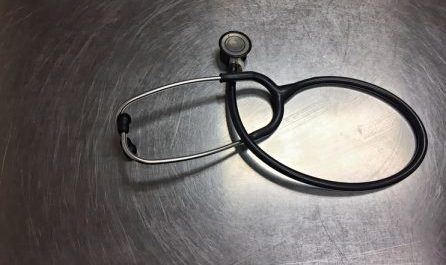
Writing her first article for Practice Business, Dr Clare Price discusses the subject of hypertension. Beginning with a concise definition of blood pressure, she delves into the risk factors associated with hypertension and how the condition can be best managed at general practice level
 What is ‘blood pressure’?
What is ‘blood pressure’?
‘Blood pressure’ is the pressure exerted on the walls of the arteries by the blood as it is pumped around the body. It is expressed as the systolic pressure, the maximum pressure created when the heart beats, over the diastolic pressure, the pressure which remains in the arteries when the heart is relaxed. It is measured in millimetres of mercury (mmHg).
What is hypertension?
A blood pressure of 140mmHg/90mmHg or below is considered normal for most adults, although lower targets may be recommended in some conditions such as diabetes or heart disease. If a patient has consistent blood pressure readings above 140mmHg/90mmHg hypertension is diagnosed. NICE now recommends that hypertension should be confirmed with ambulatory blood pressure monitoring. To do this the patient wears a cuff around the upper arm for 24 hours, which inflates automatically to take a series of readings. The average of these readings provides an accurate measurement of the patient’s blood pressure. Alternatively, some patients prefer to purchase an automated monitor – now readily available on the high street – and capture a series of readings at home. These methods avoid misdiagnosis based on so-called ‘white coat hypertension’, a common phenomenon in which a patient’s blood pressure readings are artificially elevated in the surgery environment.
Hypertension is a major risk factor for sudden, catastrophic events such as strokes and heart attacks which are associated with high morbidity and mortality. However, high blood pressure can also have less obvious, but equally important, consequences including damage to blood vessels in the eyes, kidney damage and heart failure. Patients are often unaware of these issues, as they may not cause symptoms, so a proactive approach is required to detect patients with high blood pressure early. It is recommended that anyone over the age of 40 should have their blood pressure checked every five years.
Management of hypertension
The first step in managing hypertension is to encourage weight loss, smoking cessation and a healthy lifestyle with plenty of exercise and a low salt diet. Weight loss lowers the burden on the heart by reducing the distance blood must travel through peripheral blood vessels which supply fatty tissues. Exercise encourages blood to flow through the vessels, making the arteries behave more efficiently. On the other hand, smoking causes fatty deposits to develop in the blood vessels, making them narrower and, therefore, more resistant to blood flow. High dietary salt intake makes the kidneys retain water, increasing the amount of fluid circulating in the blood vessels and, therefore, the overall pressure in the system. Small lifestyle changes can see a significant drop in blood pressure so all patients are encouraged to make these simple changes.
Use of oral medications
If adequate blood pressure control cannot be achieved by lifestyle measures alone oral medications are used; these are split into four main groups, which are often used in combination to reduce blood pressure effectively. Hypertension in primary care is a very common problem, affecting roughly 30% of the adult population. QOF points are awarded for meeting targets in all those on the hypertension register. Patients may be exempted from these targets if clinical assessment deems it unsafe to achieve the target blood pressure, as is often the case in frail elderly patients in whom tight blood pressure control may increase the risk of falls.
The four main oral medication groups used to reduce blood pressure
- ACE-inhibitors (Ramipril, Lisinopril) reduce the production of angiotensin II, a hormone that encourages constriction of the blood vessels, thus allowing them to relax.
- Beta-blockers (Bisoprolol, Atenolol) slow the activity of the heart by blocking the action of adrenaline on the heart muscle.
- Calcium channel blockers (Amlodipine, Felodipine) encourage the muscular walls of blood vessels to relax, and are particularly useful in elderly patients as blood vessels tend to become ‘stiffer’ with age.
- Diuretics (Indapamide, Bendroflumethiazide), or ‘water tablets’, encourage excess fluid to be passed out of the body, reducing the total circulating volume and, therefore, the blood pressure burden.
Clare Price bio
Dr Clare Price is a practising GP in Somerset. She studied Modern Languages at the University of St Andrews before a change of heart led her to graduate medicine at Newcastle University. She worked in hospital in Central London, and then completed her GP training in West London.
Don’t forget to follow us on Twitter, or connect with us on LinkedIn!

Be the first to comment